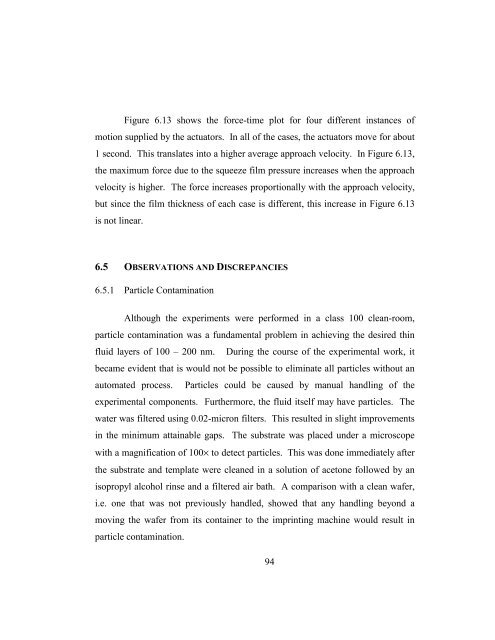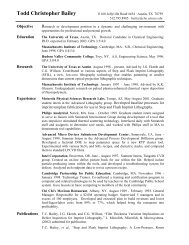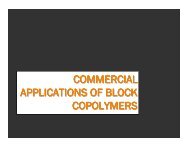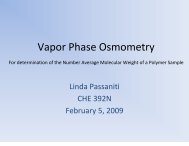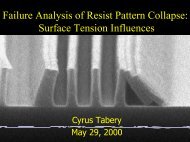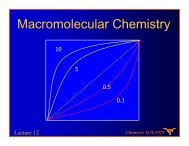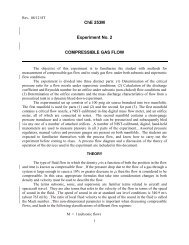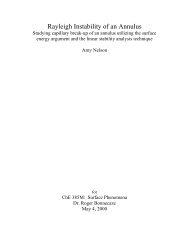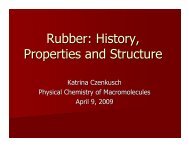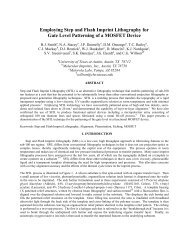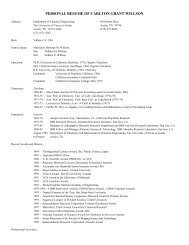Asymmetric fluid-structure dynamics in nanoscale imprint lithography
Asymmetric fluid-structure dynamics in nanoscale imprint lithography
Asymmetric fluid-structure dynamics in nanoscale imprint lithography
- No tags were found...
You also want an ePaper? Increase the reach of your titles
YUMPU automatically turns print PDFs into web optimized ePapers that Google loves.
Figure 6.13 shows the force-time plot for four different <strong>in</strong>stances ofmotion supplied by the actuators. In all of the cases, the actuators move for about1 second. This translates <strong>in</strong>to a higher average approach velocity. In Figure 6.13,the maximum force due to the squeeze film pressure <strong>in</strong>creases when the approachvelocity is higher. The force <strong>in</strong>creases proportionally with the approach velocity,but s<strong>in</strong>ce the film thickness of each case is different, this <strong>in</strong>crease <strong>in</strong> Figure 6.13is not l<strong>in</strong>ear.6.5 OBSERVATIONS AND DISCREPANCIES6.5.1 Particle Contam<strong>in</strong>ationAlthough the experiments were performed <strong>in</strong> a class 100 clean-room,particle contam<strong>in</strong>ation was a fundamental problem <strong>in</strong> achiev<strong>in</strong>g the desired th<strong>in</strong><strong>fluid</strong> layers of 100 – 200 nm. Dur<strong>in</strong>g the course of the experimental work, itbecame evident that is would not be possible to elim<strong>in</strong>ate all particles without anautomated process. Particles could be caused by manual handl<strong>in</strong>g of theexperimental components. Furthermore, the <strong>fluid</strong> itself may have particles. Thewater was filtered us<strong>in</strong>g 0.02-micron filters. This resulted <strong>in</strong> slight improvements<strong>in</strong> the m<strong>in</strong>imum atta<strong>in</strong>able gaps. The substrate was placed under a microscopewith a magnification of 100× to detect particles. This was done immediately afterthe substrate and template were cleaned <strong>in</strong> a solution of acetone followed by anisopropyl alcohol r<strong>in</strong>se and a filtered air bath. A comparison with a clean wafer,i.e. one that was not previously handled, showed that any handl<strong>in</strong>g beyond amov<strong>in</strong>g the wafer from its conta<strong>in</strong>er to the impr<strong>in</strong>t<strong>in</strong>g mach<strong>in</strong>e would result <strong>in</strong>particle contam<strong>in</strong>ation.94


